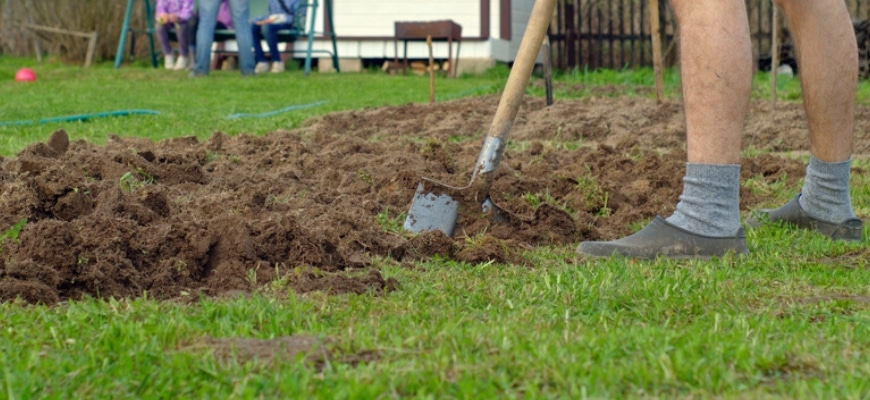Benefits of Installing a Dry Well on Your Property

If you’re looking for a way to improve the drainage on your property and reduce runoff, installing a dry well may be the perfect solution. A dry well is a simple system that collects water from drains or other sources and disperses it around your property, helping to keep water away from areas where it can gather and cause erosion or other damage. Not only is a dry well beneficial in terms of protecting your home’s foundations, but it also has environmental advantages too – including reducing pressure on municipal storm sewers and protecting natural wetlands near your property. In this blog post, we’ll explore all these benefits as well as the installation process – so read on if you want to know more!
Dry Wells and How They Work
Dry wells are an excellent solution to manage stormwater runoff efficiently. These wells enable rainwater to seep into the ground through the pores in the soil, allowing it to recharge the groundwater. This gradual infiltration helps to prevent flooding and erosion, benefitting the surrounding area. To install a dry well, a large hole must be dug, about 4 feet in diameter, lined with a porous material, and then filled with gravel. The dry well design allows the stormwater to gradually infiltrate into the surrounding soil while filtering out and trapping pollutants. Dry wells are low maintenance and incredibly beneficial for large areas with poor soil infiltration capacity. With proper installation, they can lower the risks of urban flooding and improve the quality of groundwater.
Reasons to Install a Dry Well on Your Property
Installing a dry well on your property can provide numerous benefits. A dry well is a solution that helps manage excess water runoff from your property. By filtering the water through layers of gravel and stone, it allows it to replenish underground water reservoirs. If you’ve noticed water pooling on your lawn or driveway, a dry well installation can help prevent soil erosion and standing water from damaging your property. Additionally, a dry well provides an eco-friendly solution by reducing the amount of water that goes into storm drains and ultimately, the ocean. With a well-maintained dry well, you can enjoy a healthier and happier property.
Benefits of Installing a Dry Well for the Environment
Installing a dry well can have numerous benefits for the environment. The basic principle of a dry well is to collect rainwater and other runoff and slowly infiltrate it into the ground, rather than allowing it to cause erosion or run into a nearby waterway. By doing so, dry wells can help to recharge local groundwater supplies, which is particularly important in arid or drought-prone areas. They can also help to reduce the risk of flooding during heavy rain events, by allowing water to seep into the ground instead of pooling or creating destructive runoff. Additionally, dry wells can prevent pollutants like automotive oil, fertilizers, and pesticides from entering surface water or groundwater sources, which can protect the health of both people and wildlife. Overall, a dry well can be an excellent investment for homeowners and communities looking to make a positive impact on the environment.
Controlling Erosion with a Dry Well
Erosion is a natural process that can become a problem when it occurs too quickly, washing away valuable topsoil and leaving barren land in its wake. Thankfully, there are a variety of methods available to control erosion, such as terracing, planting vegetation, and even using dry wells. Dry wells are a particularly effective way to control erosion by capturing and redirecting stormwater runoff. Essentially, a dry well is an underground structure that collects excess water and distributes it into the soil slowly, preventing erosion and helping to recharge the local aquifer. Implementing a dry well system on your property is a smart and effective way to mitigate erosion and protect your land for years to come.
Saving Money with a Dry Well
Are you tired of spending hefty amounts on your monthly water bill? It’s time to consider implementing a dry well system in your yard. By redirecting rainwater and other runoff into a dry well, you can save money on your water bill and help protect the environment by reducing the strain on municipal water systems. Installing a dry well is also a great way to prevent flooding and erosion in your yard. Not only will you be benefiting financially, but you’ll also be doing your part in sustainable living. A dry well may require an initial investment, but the long-term savings and benefits are well worth it.
Different Types of Dry Wells
Dry wells are a popular and effective way to manage stormwater in areas where traditional drainage systems are not available or practical. There are various types of dry wells, including gravel-filled pits, pre-cast concrete chambers, and perforated plastic or metal barrels. Each type has its own unique advantages and disadvantages depending on factors such as cost, installation requirements, and local soil conditions. Regardless of the type of dry well chosen, the goal is the same: to capture and filter rainwater runoff before it can cause flooding or other water-related damage. With so many options available, property owners can choose the dry well that best fits their needs and budget.
Maintenance Tips for Your Dry Well
Dry wells are an essential part of many residential and commercial properties. These wells are designed to capture and store excess water from rain and irrigation systems. However, without proper maintenance, dry wells can quickly become clogged, leading to water backups and potential property damage. To keep your dry well functioning at its best, it’s important to conduct regular maintenance. This includes cleaning the well at least once a year, keeping vegetation away from the area, and making sure there are no obstacles blocking the water flow. With these simple tips, you can ensure your dry well continues to work effectively and efficiently, protecting your property from water damage and keeping your land healthy.
All in all, dry wells are a great way to manage stormwater runoff and prevent flooding on your property. Installing a dry well can save energy, and money, and have environmental benefits; it can also reduce erosion and increase the value of your property. They are particularly helpful in places where traditional drainage solutions are not feasible or not allowed. Dry wells come in a variety of types, from gravel-filled to plastic chamber systems. Be sure to research your local regulations before purchasing and installing the right one for you. Maintenance is important as well, so make sure to check it regularly to ensure its proper function. If you’re looking for an effective and efficient way to manage stormwater runoff, then consider investing in a dry well system – it could end up being a very smart decision!





